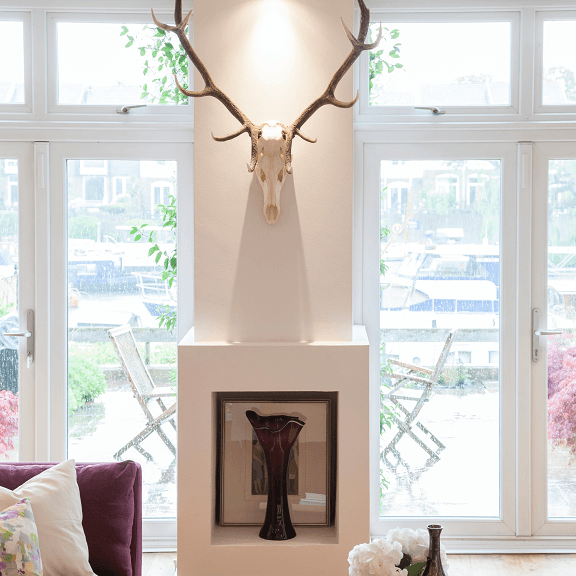Lighting mistakes!
The key to good lighting is layering light sources. High level (spots and downlighters), mid-level (picture and wall lights, and table lamps) this can also include niche lighting and display lighting. Low-level lighting – under unit lighting, skirting lighting, lighting at this level gives you good ambient light if you can’t have table lamps. There is also highlight lighting, where you add a fixture to highlight a feature, doorway, or to give depth and interest to, for instance, a long corridor.
- Layer your lighting scheme by making sure you have lights at different heights and whatever you do don’t rely on just one kind of light source. Mix your light sources with a variety of overhead, floor and mid-level lighting.
Designer Tip: Employ an interior designer to help you with your lighting and electrical layouts. But then I would say that, wouldn’t I!
- Floor lighting – inserted into the skirting or up-lights from the floor, great for drama and interest. These tiny lights inserted into the skirting board are great for lighting stairs where people who move around at night need a little lighting for safety such as children and older people. Having said that they also look good!
2. Mid-level lighting – lights at eye-level such as table lamps, niches, or alcove lighting (image 2) wall lights – this lighting is your workhorse, the general lighting/task lighting where you need it and gives ambiance to any room. This lighting has to be adaptable, dimmable, and variable. It can also be the most decorative of lighting, with gorgeous lamps and shades.
Designer tip: Gold on the inside of a shade throws a glorious hue to the room. While black will direct the light up and down and white lining on the shade will defuse it around the room.
- High-level lighting – chandeliers, spotlights, downlights and uplights behind cornices or in lighting soffits. These fixtures create lighting in general but can be harsh and unflattering if not controlled and if you have too many. Single or multiple overheads can make you feel like you are on stage. Also overhead light casts a shadow on the worktop. I would recommend using dimmers and soft or warm white bulbs in every room, including bathrooms. Lighting from the ceiling washes down on you and can be harsh, unflattering, and can be too sterile. Don’t make your ceiling look like a cheese grater by installing too many fittings. Be aware of where you need the light, what kind of light it should be: should it wash the walls, should it be a direct light on a surface. People often make the mistake of installing lights everywhere – filling the ceiling when in actual fact they only need it where the task is.
Designer tip: Don’t use overhead light that’s too bright. Don’t litter the ceiling with too many lights – target where you need them.
- Task lighting – think about the tasks they are trying to light
Do you need overhead or mid-level lighting? Think about where can you put lighting that is not in the ceiling or table lamps. This lighting of bookcases, niches, and skirting can create excellent mid-level lighting, that is comfortable to be in and easily controlled with dimmers and circuits.
Designer Tip: With the new small LED lights you can sneak lights into and behind all sorts of architectural details.
- Not enough circuits
You don’t need that many circuits in bedrooms, but reception rooms and kitchens where different tasks and events are undertaken means that you need to be able to set different scenes with different levels of lighting.
- Do install dimmers
You want to create atmosphere and drama – you need to control the light levels. The easiest way to do this is with dimmers. However, if you plan your lighting well you don’t have to use dimmers on all lights!
Click here to return to all articles or click left or right headings below to scroll through articles.

